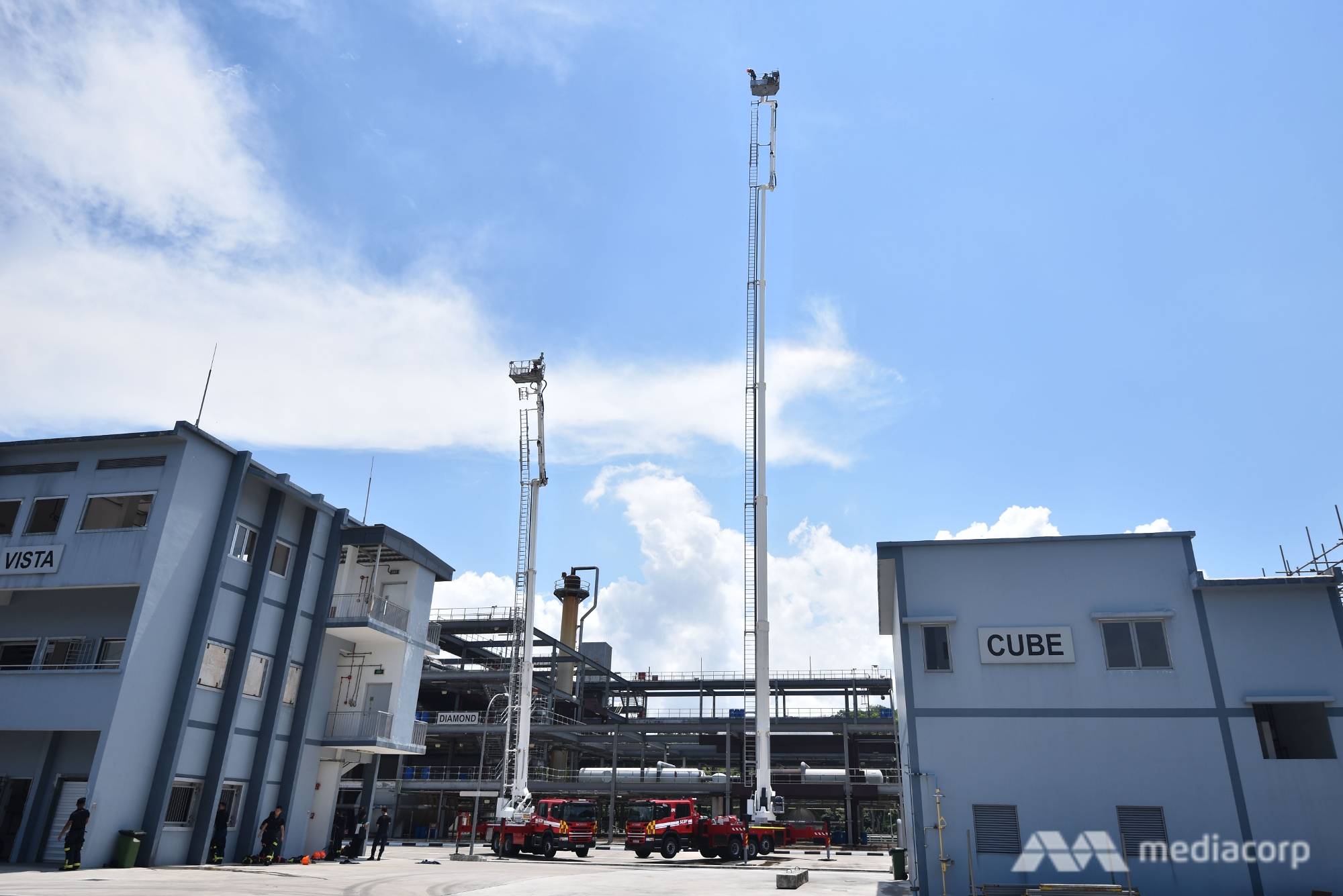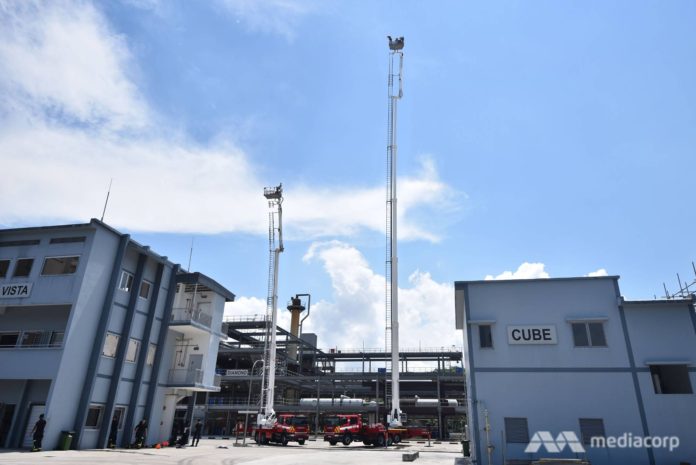SINGAPORE: One of the emergency vehicles deployed to the scene of a recent fire at a Toa Payoh flat at The Peak had “encountered difficulty” entering the estate due to space constraints at one entrance, said the Singapore Civil Defence Force (SCDF) on Wednesday (Sep 9).
Under the 2007 Fire Code which applied to the building plan for The Peak when it was constructed, designated entry and exit points were in place for emergency vehicles.
However, the fire code back then did not require signage to indicate designated entry and exit points, said SCDF, adding that the vehicle, known as the Combined Platform Ladder (CPL), “inadvertently attempted to enter the estate” using the designated exit for emergency vehicles.
“The designated exit allowed for a sufficient turning radius for emergency vehicles to exit, but not for entering, due to other infrastructural constraints such as a linkway roof and road divider curbs,” said the SCDF in a media release.
“The CPL therefore was unable to enter via the designated exit as it did not have a sufficient turning radius and clearance.”

The Combined Platform Ladder 60m or CPL60 (right) is the SCDF’s latest addition to its aerial operational capabilities. It is able to extend its ladder up to a maximum height of 60m, twice the height of the SCDF’s current CPL34 that has a 34m ladder (left). (Photo: Gaya Chandramohan)
Three people were taken to hospital as a result of the fire which broke out in a 20th-floor flat in the early hours of Aug 29. About 300 residents were evacuated.
A total of 11 emergency vehicles were deployed. The other vehicles which used the designated entry were able to reach the site without any issues, said SCDF on Wednesday.
It noted that under the updated 2018 Fire Code, developments are now required to put up signages to clearly mark designated entry and exit points for emergency vehicles, but such requirements are not applied retrospectively.
“Nevertheless, to prevent the recurrence of such incidents, SCDF is working with the Housing & Development Board (HDB) to place signages at such designated entry and exit points for emergency vehicles at “The Peak”, and at other HDB developments that similarly have such designated entry and exit points but do not have such signages,” it said.
BUILDING’S WET RISER WAS NOT FUNCTIONING
SCDF said it was responding to media queries and online feedback about the incident, and explained its use of hose reels instead of water jets to fight the fire.
During the operation on Aug 29, SCDF discovered that the block’s wet riser, to which water jets are connected, was not functioning.
“As a general practice, both hose reels and water jets are deployed simultaneously in firefighting operations,” said SCDF on Wednesday.
“In the case of the fire at The Peak, SCDF officers could promptly enter one of the affected units to rescue two trapped persons with the use of hose reels. The fires at both HDB units were effectively extinguished using the hose reels.”
READ: About 300 Toa Payoh residents evacuated after fire breaks out at HDB flat, 3 taken to hospital
Hose reels are generally faster to operate but have a lower flow rate, which makes them more suitable for smaller fires or incidents which require fast responses, SCDF explained.
Water jets, on the other hand, have a higher flow rate but require more time to set up.
SCDF said a notice was issued to the Bishan-Toa Payoh Town Council on Sep 4 about the wet riser system, and that issue has been fixed.
“SCDF is still investigating the cause of the malfunction and will take further enforcement action against the responsible parties where necessary,” it added.





